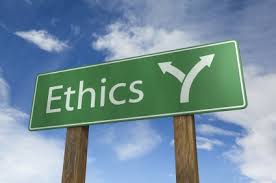In the continuing tradition of 'If it interests me, it must be interesting to other people too' that explains just about everything that gets covered on this blog, it is once again time to examine one of my favorite and recurring topics - Pantone's 'Color of the Year' choice.
I continue to be completely, and probably irrationally fascinated with Pantone's 'Color of the Year' designation and process.
In case you are unfamiliar (shock!), with Pantone and the Color of the Year designation here is all you need to know. Pantone is the world's leading authority on color, color systems, and publishes the industry standard definitions of colors. In other words that nice new orange shirt you just bought is not just 'orange' it is 'Pantone Persimmon Orange 16-1356 TPG'. Pantone provides guidelines and definitions for thousands of variations of colors, and it is the standard by which colors are classified.
Each year the color experts at Pantone declare one specific shade the 'Color of the Year'. This specific color, (in 2018 it was 'Ultra Violet' in case you did not know), is meant to be a kind of reflection of trends in art, design, fashion, movies, popular culture, and branding and often will subsequently become more common in actual products like clothing and jewelry as a result of the Color of the Year designation. So perhaps if you think back on 2018 and think you have seen a lot of Ultra Violet around - sort of a vibrant shade of deep purple you have Pantone to thank or blame for that.
So this week Pantone announced its choice for Color of the Year for 2019 a bright and animated shade of I guess pink called 'Living Coral' - aka Pantone 16-1546.
The rationale behind this choice of Living Coral for color of the year?
Here's what Pantone's color experts had to say about the selection: (side note, isn't 'Color Expert' one of the coolest job titles ever?)
In reaction to the onslaught of digital technology and social media increasingly embedding into daily life, we are seeking authentic and immersive experiences that enable connection and intimacy. Sociable and spirited, the engaging nature of PANTONE 16-1546 Living Coral welcomes and encourages lighthearted activity. Symbolizing our innate need for optimism and joyful pursuits, PANTONE 16-1546 Living Coral embodies our desire for playful expression.
Representing the fusion of modern life, PANTONE Living Coral is a nurturing color that appears in our natural surroundings and at the same time, displays a lively presence within social media.
PANTONE 16-1546 Living Coral emits the desired, familiar, and energizing aspects of color found in nature. In its glorious, yet unfortunately more elusive, display beneath the sea, this vivifying and effervescent color mesmerizes the eye and mind. Lying at the center of our naturally vivid and chromatic ecosystem, PANTONE Living Coral is evocative of how coral reefs provide shelter to a diverse kaleidoscope of color.
So what, if anything, should any of us care about what Pantone says about culture, trends, society, fashion, and how we all are collectively feeling - expressed through the colors we are seeing and using more and more?
I suppose the main thing to think about is right in the verbiage Pantone used to describe their thinking processes behind the selection. The words authentic, optimism, and joyful all show up in the description. Pantone is suggesting that the colors (and feelings) we will seek in 2019 will be ones like Living Coral, a color that (if such a thing is possible), will help to make us feel more open to fun, immersive, and in the real world (as opposed to just on Instagram), social experiences - like actually diving to a coral reef.
What kind of a year was 2018?
Kind of good I suppose, and kind of strange at the same time. Business and the economy are still seeming pretty strong, but as 2018 winds to a close there have been a few cracks developing in what has been an almost decade-long recovery. 2019 does seem a little bit uncertain, at least from my point of view.
Pantone thinks/hopes that Living Coral will help people who are "craving human interaction and social connection, the humanizing and heartening qualities displayed by the convivial Pantone Living Coral hit a responsive chord."
Let's hope.
The colors we choose to wear to decorate our homes to use in art and other creative endeavors say plenty about us, about who we are, how we feel, and perhaps how we want to feel.
What do you think? Ready to rock plenty of Living Coral in 2019? I think it would make an excellent tie, (in case you have not shopped for my Christmas present yet).
Have a great day!

 Steve
Steve


